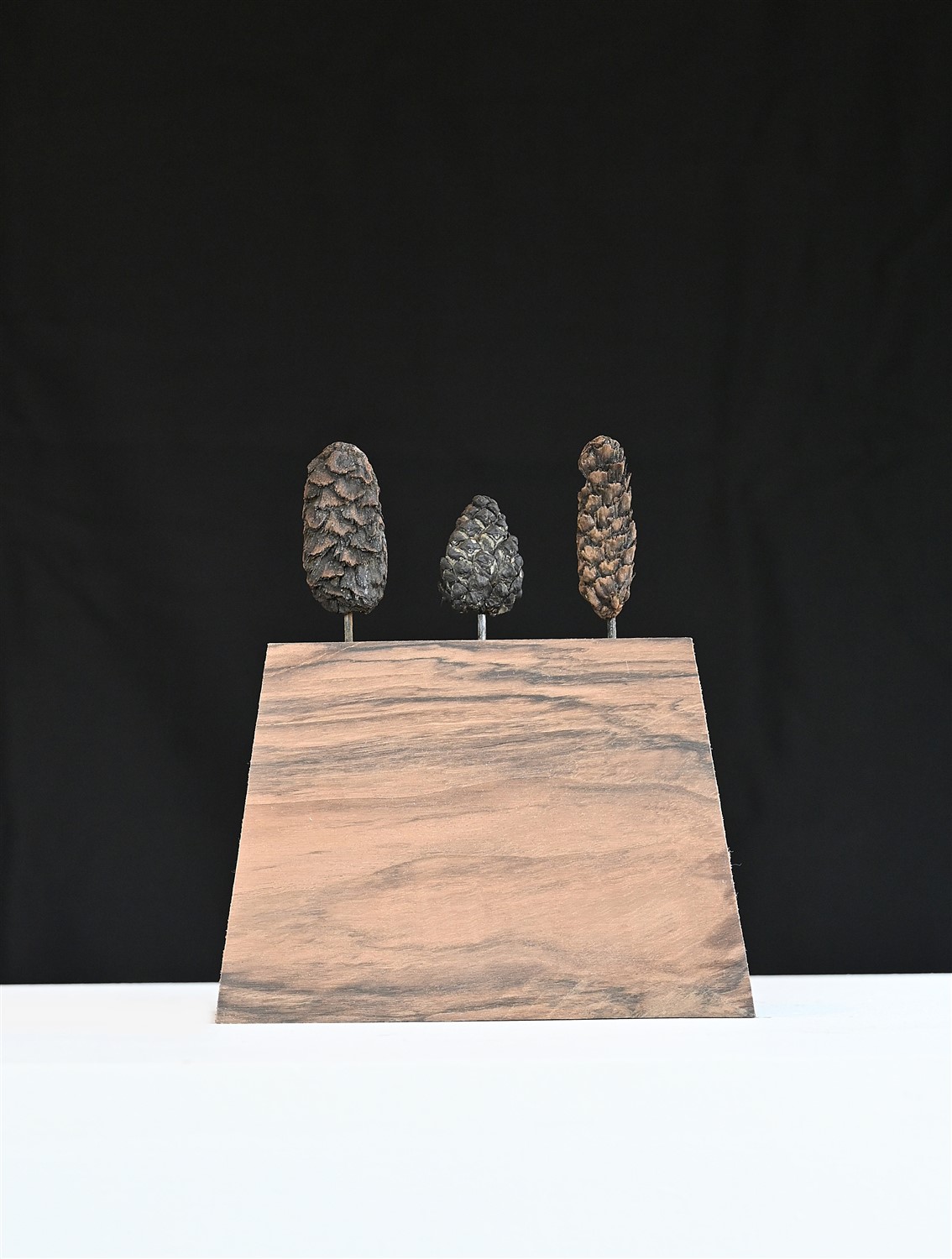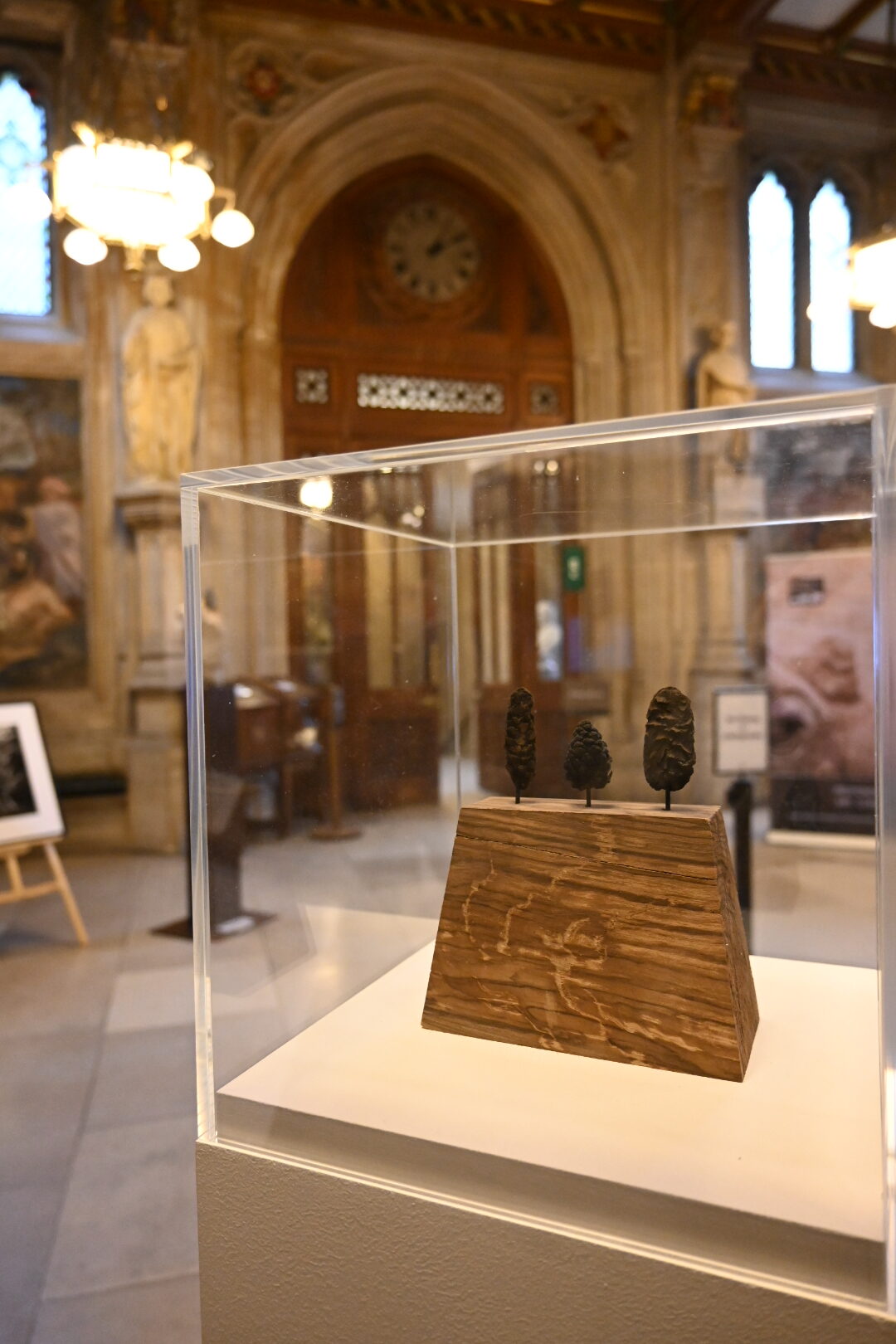David Nash OBE RA
Faraway Trees, 2024
800,000 year old pine cones recovered from the sediments of Happisburgh beach, mounted on an oak base. With perspex case.
H.25 W. 28 D. 12 cm
£5,000
To make an enquiry about this work please email robert@realworldconservation.org.uk
Glaciers and rivers buried the ancient landscape in sand and clay long ago but erosion along the Happisburgh coastline is revealing secrets about the past. In 2013 The British Museum discovered the oldest human footprints outside Africa, dating back 950,000-850,000 BCE preserved in the clays on the beach. Also uncovered were ancient wood and pinecones from the ancient forest that these people lived in, flooded as sea levels rose through historic climate change.
Listen to Robert Ferguson, the Collection Curator, explaining Faraway Trees:

David Nash, a renowned British sculptor and land artist, is celebrated for his unique and profound connection to the natural world, creating art that both celebrates and protects the environment. Born in 1945 in Esher, Surrey, Nash developed a deep affinity for wood as his primary medium, choosing to work almost exclusively with organic materials like trees, roots, and branches. His sculptures, installations, and land art are inherently collaborative works with nature, often crafted in situ to maintain a harmony between the environment and the art itself.
Nash’s approach is not only aesthetically driven but is also a deeply respectful and ecologically mindful practice. He regards trees and landscapes as living entities and seeks to create a relationship with them rather than simply use them as materials. This can be seen in projects like *Ash Dome* (1977), one of his most famous works, where he planted a circle of 22 ash trees in a remote location in Wales, training them over decades to grow into a natural dome. This project reflects Nash’s commitment to slow art and his willingness to allow nature to guide the process. Over 40 years later, *Ash Dome* has become an evolving piece that both adapts to environmental changes and reminds viewers of nature’s intrinsic power and resilience.
Another significant aspect of Nash’s work is his commitment to sustainability and the conservation of forests. Nash often uses fallen or naturally felled trees, respecting the lifecycle of wood rather than cutting living trees for his sculptures. His *Wooden Boulder* project, begun in 1978, embodies this ethos. After carving a large wooden sphere from a felled oak tree, he allowed it to travel downstream naturally. Over the years, the boulder has journeyed through rivers, streams, and even disappeared for long stretches, only to resurface unexpectedly. This project reflects his belief in letting nature take its course, as he sees his role as an artist to observe and document rather than control.
Nash’s philosophy of working with, rather than against, nature is at the core of his artistic practice and environmental activism. He has long advocated for reforestation, sustainable forestry, and environmental stewardship, believing that humans have a duty to protect the landscapes that inspire and sustain us. Through his art, Nash raises awareness about the importance of trees and ecosystems, urging society to recognize and respect their ecological value. By bridging art and environmental activism, David Nash’s work serves as a powerful reminder of our interconnectedness with the natural world and our responsibility to preserve it for future generations.

Nature in Art Museum, Glouscestershire

Palace of Westminster, London

